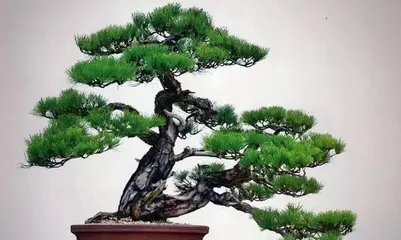Bonsai wire wrapping is a creative process combining technology and art, where plants are shaped in form and posture through skillful use of wires, making bonsai more unique and vivid. This article will introduce the basic points and techniques of bonsai wire wrapping, helping readers master this skill to create their own unique bonsai artworks.

Choosing appropriate wire and tools
Choosing suitable wire is the foundation of bonsai wire wrapping. Usually, stainless steel wire with a diameter of 2-3 mm is used; this material is tough and durable, able to withstand great tension. Additionally, tools such as scissors, pliers, and tweezers need to be prepared for shaping and adjustment.
Understanding plant growth patterns
Before performing bonsai wire wrapping, one must first understand the growth patterns of the plants being used. Different plants have different growth methods and habits; understanding these characteristics helps us better shape the form and posture of the plants.

Determine the basic shape of the bonsai
Before performing bonsai wire wrapping, the basic shape of the bonsai needs to be determined. It can be decided based on one's creative intent and the characteristics of the plant whether the bonsai presents itself in straight lines, curves, rings, etc.
Inserting the wire into the potting soil
Insert one end of the wire into the potting soil to ensure stability. If multiple wires need to be fixed, several wires can be inserted at appropriate positions.
Shaping the wire according to the bonsai's shape
Based on the basic shape of the bonsai, use tools like pliers and tweezers to gradually shape the bends and twists of the wire. Pay attention to the force applied during operation to maintain the uniformity and smoothness of the wire.

Adjusting the position and angle of the wire
During the wire-shaping process, the position and angle of the wire need to be continuously adjusted so that they coordinate with the plant's posture. Tweezers or pliers can be used to gently adjust the position of the wire to make it more natural.
Maintaining coordination between the bonsai and the wire
During the wire-wrapping process, pay attention to maintaining coordination between the bonsai and the wire. The wire should blend with the bonsai, not be abrupt, and at the same time, it should not be completely hidden within the plant to preserve the artistic effect.
Paying attention to the stability of the wire
After wrapping the wire, ensure its stability. Small nails can be used to fix the wire in the potting soil, or plastic clips can secure the wire to the edge of the pot to prevent it from loosening.
Creating rich forms and postures
The charm of bonsai wire wrapping lies in its ability to create diverse and abundant forms and postures. One can shape the plant's form based on imagination and creativity, making it more expressive and artistic.
Focusing on detail processing
When performing bonsai wire wrapping, focus on handling details. Scissors can be used to trim the leaves and branches of the plant to make them neater and more beautiful. At the same time, pay attention to adjusting the curvature and angle of the wire to make it more consistent with the plant's growth pattern.
Paying attention to plant health
When performing bonsai wire wrapping, pay attention to the health of the plant. Different plants have different needs, so watering, fertilizing, and lighting should be arranged reasonably to ensure the growth and development of the plant.
Regular trimming and maintenance
After bonsai wire wrapping, regular trimming and maintenance are needed. Based on the plant's growth situation, unnecessary parts can be trimmed regularly to keep the plant in good shape.
Appreciating and displaying the bonsai
After completing bonsai wire wrapping, it can be placed indoors or outdoors for appreciation. Bonsai wire wrapping is not just a technique, but also an artwork; through appreciation and display, one can experience the beauty and pleasure brought by the bonsai.
Exchanging and sharing with others
In the process of wiring bonsai, one can exchange and share with others. You can attend bonsai wire wrapping training classes or visit professional bonsai exhibitions to learn from and exchange experiences with other enthusiasts.
Through the creative process of bonsai wire wrapping, we can feel the beauty and artistry of the fusion between plants and wires. Mastering the basic skills and key points of bonsai wire wrapping can help us create unique and artistically rich bonsai works. Whether as a hobby or a profession, bonsai wire wrapping is an interesting and challenging artistic creation worthy of our deep exploration and development.